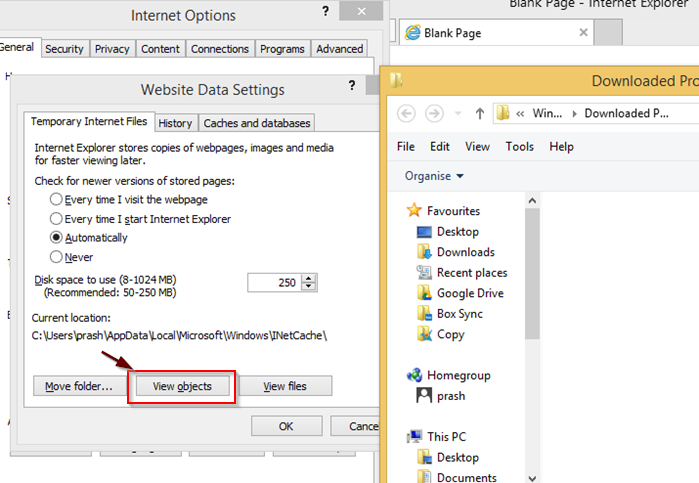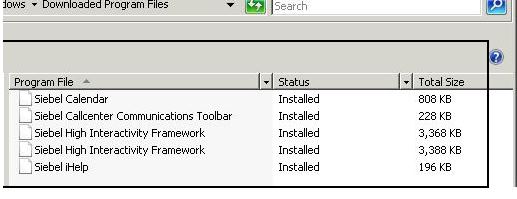Siebel High Interactivity Framework
Siebel High Interactivity, fondly called HI, was the default way of accessing Siebel application over the web or in offline mode - until Open UI made its debut.
What is Siebel HI Framework? #
HI was introduced back in the days of Siebel version 7 - we’re talking about early 2000’s here. Prior to v7 Siebel was a typical client/server application - you had a client installed on the user computer to connect to the server (similar to today’s dedicated client).
The world was simple.
HI assured in changes to Siebel and aligned it to the web world. It enabled the “Siebel Web application”, which provided a centralised server accessible to clients through a standard browser. Siebel leveraged “cool technology” of the time to accomplish this - ActiveX controls.
ActiveX, a technology created and promoted by Microsoft, enables rich client applications. Developers code these controls and deploy them on the server. They get downloaded to the local computer when users access the web page for the first time. ActiveX controls get installed in the browser container and can be used in future interactions with the same site or on different sites.
You can see ActiveX controls installed in Internet Explorer through Internet Options > General tab > Settings > View Objects.
Or, you can directly look them up at “C:\Windows\Downloaded Program Files”.

ActiveX enabled better communication between the client browser and the server. The server could make use of the liberal privileges of ActiveX on the user’s computer and present a better user experience.
Once downloaded ActiveX controls stay active unless they become invalidated by a newer version, or until they become corrupt (thereby requiring a re-download). The refresh of ActiveX controls in those cases is automatic.
Key ActiveX controls used by Siebel are below -
[table id=6/]
Find all Siebel ActiveX controls in the product documentation.
You can use Siebel-provided controls but cannot modify them. However, you can add controls of your own and use the underlying Siebel infrastructure to push them over to the client.
Additional Considerations in HI #
ActiveX does not require the end user to do an explicit download or to install software explicitly. The power to do that automatically and the power to provide a rich front-end provided a few advantages -
- Higher degree of control to access files and applications on the client side (this led to security headaches)
- Reduce the server/client round trips (you can see this advantage to a certain degree even today when you compare HI vs. Open UI)
- Simplify data payload (for e.g. you have the 1.X MB download that paints the Siebel applet UI with just the essential information transferred from the server to the client)
The way we look at browser applications with HTML5 and advanced Javascript is different, but ActiveX played a role in its day. Though you can drastically reduce the client footprint with ActiveX, the controls still need to get downloaded when the user logs into Siebel application for the first time. The ‘slow response on the first visit’ is quite infamous in Siebel world.
There are two additional underlying issues here -
- Organisations do not provide superuser/admin privileges to everyone in the system, which prevents the installation of ActiveX controls on the client computers
- Secure enterprises do not allow third-party ActiveX controls to be installed or executed
To overcome these issues Organisations routinely put in place a system to digitally sign Siebel-provided and custom ActiveX controls. Client-side browser security is adjusted to allow these signed downloads.
IT teams also tried to eliminate the need for end-users to install ActiveX controls by proactively installing them earlier in the game -
- Create a custom batch file/program that bundles all the required ActiveX cab files. This program is remotely pushed to use computers through standard Windows deployment tools
- Create a simple script to open Internet Explorer, and access predeploy.htm file present on the server. This script is then executed as an administrator on user computers to install all required controls
As you can imagine, this caused quite a bit of concern whenever user computers underwent a refresh, ActiveX controls became corrupt, or when Siebel applications got upgraded.
Problems with Siebel ActiveX Controls #
ActiveX was traditionally insecure.
Although it did enable rich capabilities for the client, it did not take off due to the nature of ActiveX and the lack of stable support from non-IE browsers.
Of course, it did not help when Google reinvented the way Javascript could be used and the advent of HTML5.
The issues notwithstanding, ActiveX has enjoyed a rather long stable period through Siebel 7, 8 and now 8.1.
Issues with ActiveX controls after their initial installation are uncommon. They function without needing any intervention and keep doing that until they become corrupt or become invalidated by a later version. In case of any issues, Siebel support team tends to apply a high-handed approach of deleting all ActiveX controls and recreating them by accessing the application.

Alternatives to Siebel high interactivity framework #
There are two variants to Siebel HI -
1. Siebel Standard Interactivity (SI)
SI was the de facto recommendation for all Siebel partner and customer applications. Siebel SI was considered the way forward if you cannot control the ecosystem of the users’ computer.
SI is more flexible when it comes to client ecosystems - all the main browsers are supported and the end-user operating system does not matter. SI is also cost-effective for Partner and Customer applications since it enable organizations to break away from “per user” license fees.
But, SI is lousy when it comes to user experience. The end-users hated it unless you heavily customized it. Even though SI sees continued usage in a few organizations, it is typically not considered as a mature application to be deployed for extensive usage.
Both HI and SI are moving to the new standard - “Siebel Open UI”.
2. Siebel Open UI
Introduced in Innovation Pack 2013, Open UI represents all that is new about Siebel. Open UI Is built on a framework leveraging JavaScript, CSS and HTML5 standards. It brings back the word “modern” to Siebel applications.
Open UI is supported on varying device layouts, on all standard browsers, and support the latest in web standards.
As all functions of HI move to Open UI, you will see less and less of Siebel HI moving forward. HI’s demise is also fast forwarded by the fact that Oracle has not announced support for HI on Internet Explorer 9, 10 or 11.
To Summarise #
Siebel HI is down but not out.
I do not expect Oracle to stop supporting HI altogether because of their Application Unlimited program, but customers cannot afford to stay in previous versions of the browsers and sustain HI for a long time. Move to Open UI today if you plan to stay with Siebel for a couple of years.